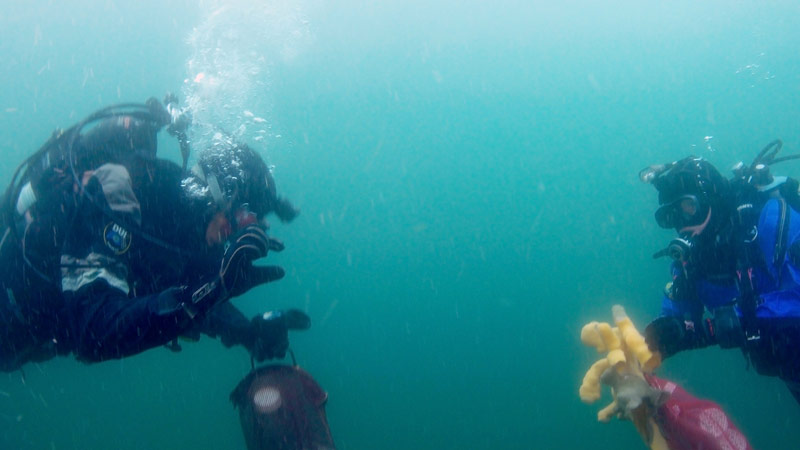

Communicating with your buddy about air consumption and safety is always important during scuba dives, but during a science dive you also need to be able to communicate about what samples to collect and where things stand with the particular objectives of the dive. This becomes even more important during dives where your bottom time is limited based on cold water temperatures and deep depths. Here two members of the dive team, Bob Stone and Rhian Waller, communicate during their safety stop. Both divers are wearing dry suits, gloves, and hoods to protect them from the cold water and carry bags full of samples as they prepare to head back to the boat.